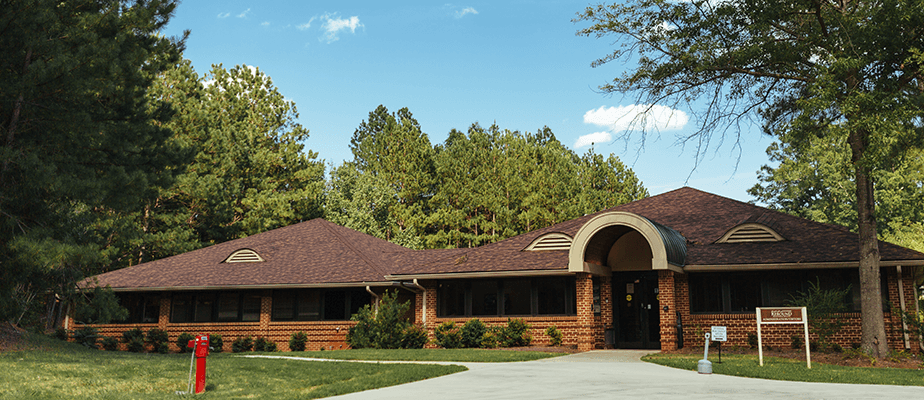Alcohol addiction, or alcoholism, is a debilitating disease in which a person is unable to stop his or her alcohol consumption despite the effect the alcohol has on their work, interpersonal life, education, or health.
More About Alcohol Addiction
Learn More About Alcohol Addiction
Alcohol abuse tends to begin in a person’s mid-teens and early twenties. Alcoholism, the more severe of the two disorders, is a highly destructive pattern of alcohol usage that involves physical tolerance to alcohol and withdrawal symptoms if alcohol use is cut back tremendously or stopped altogether. Other symptoms of alcoholism may include drinking more alcohol for a longer period than intended as well as challenges with cutting back or stopping drinking. Alcohol affects teenagers, men, women, and older adults in far different manners.
People who abuse alcohol or have alcoholism are not simply drinking because they lack control— they can’t easily just “cut back” on their drinking. Many people who abuse alcohol or struggle with alcoholism are simultaneously struggling with mental disorders such as schizophrenia, depression, or bipolar disorder. With the right types of inpatient detox, rehab, medication, and therapies, however, most people who struggle with alcohol abuse or alcoholism are able to successfully overcome their addiction to alcohol and learn to lead a happy, healthy, sober life.
Statistics
Statistics on Alcohol Abuse & Addiction
Alcohol use and abuse still plays a major role in the United States. In the U.S. alcohol abuse and alcoholism affects about 10% of women and 20% of men, most of whom will begin using alcohol by their teen years. In the U.S. about 15 million people are affected by alcoholism or alcohol abuse. The mortality is astounding. Nearly 2,000 teens under the age of 21 will die in any given year as a result of alcohol use. In 2011, the number of alcohol-induced deaths (excluding homicide and accidents) was nearly 26,000 individuals. That very same year, nearly 16,000 people died as a result of alcohol-induced liver disease.
What Causes Alcohol Use?
Learn About the Causes and Risk Factors for Alcohol Abuse
Researchers tend to agree that addiction is not caused by a single factor, but rather it is the result of several factors working together, triggered by an event to produce addiction. Some of the most common factors related to alcoholism include:
Genetic: People who have first-degree relatives who struggle with addiction are at a much greater risk for developing an addiction themselves than others without a similar family history. However, not all who end up engaging in problematic drinking have a family history of the addiction.
Physical: The process of becoming addicted to and dependent upon alcohol occurs slowly. Over time, chronic alcohol consumption can change the normal balance of chemicals and nerve pathways in the brain associated with pleasurable sensations, judgment, and the ability to exert control over behavior.
Environmental: People who are raised in an environment in which addiction is the norm are more likely to develop a problem with addiction later in life. Additionally, people who begin drinking at an early age are at increased risk of developing addiction later in life.
Risk Factors:
- Having a partner or close friend who drinks regularly can increase the risks for developing alcoholism
- Depression and other mental health disorders can influence a person’s risk for alcoholism
- Steady drinking over time on a regular basis can produce a physical dependence upon alcohol
Signs of Alcohol Abuse
Signs and Symptoms of Alcohol Addiction
The symptoms of alcoholism and alcohol abuse will vary tremendously from person to person based upon individual genetic makeup, amount of alcohol used, frequency of use, and presence of other drugs. Some of the most common symptoms of alcohol use and abuse include:
Behavioral symptoms:
- Drinking alone
- Inability to limit the amount that is drunk
- Cravings for drinking
- Forgetting conversations or commitments
- Ritualistic drinking
- Loss of pleasure in previously-enjoyed activities
- Unusually passive
- Drinking with the purpose of getting drunk
- Hiding alcohol in odd places around the house
- Becoming irritated when unable to obtain alcohol
- Legal problems
- Inability to fulfill work or social obligations
- Preoccupation with obtaining alcohol, drinking alcohol, and recovering from the effects of alcohol
- Violence and aggression
- Risk-taking behaviors
- Heightened libido
Physical symptoms:
- Smell of alcohol on breath or skin
- Physical withdrawal symptoms
- Flushed skin
- Bloodshot eyes
- Deterioration in physical appearance
- Poor hygiene
- Impaired coordination
- Damage to all organ systems
- Decreased immune system, increased infections
Cognitive symptoms:
- Decreased attention span
- Memory loss
- Challenges with cogitation
Psychosocial symptoms:
- Low self-esteem
- Depression
- Anxiety
- Hallucinations
- Delusions
- Psychosis
- Agitation
- Irritability
- Pleasure while drinking
- Emotional labiality
Effects of Alcohol
The Effects of Alcohol Addiction
The effects of alcoholism will vary based upon the amount used, the length of the addiction, presence of other drugs or alcohol, and the frequency of use. The most common effects of chronic alcohol use and alcoholism include:
- Poor coordination
- Loss of employment
- Consequences of risky behaviors
- Car accidents
- Legal problems
- Increased violent crimes
- Domestic abuse
- Child abuse
- Divorce
- Incarceration
- Hypertension
- Cardiac arrhythmias
- Cardiomegaly
- Nystagmus
- Increased risks for cancer
- Weakened immune system
- Impotence
- Irregular menses
- Thymine deficiencies
- Dementia and confusion
- Bone loss
- Stroke
- Amnesia
- Cirrhosis of the liver
- Alcoholic hepatitis
- Acute pancreatitis
- Suicide
- Coma
- Death
Withdrawal & Overdose
Learn What Happens During Alcohol Withdrawal & Overdose
Withdrawing from alcohol can be very dangerous and should always be done under the careful watch of trained medical personnel to prevent complications. While the symptoms of withdrawal are more annoying than dangerous, the symptoms of alcohol withdrawal can quickly become life threatening. Common symptoms of alcohol withdrawal begin within 12 to 24 hours after the last drink and may include:
- Mild anxiety
- Irritability
- Nausea and vomiting
- Headache
- Insomnia
- Sweating
- Shaking
- Confusion
- Hallucinations
- Seizures
- Delirium tremens (DT’s) – life-threatening condition characterized by confusion, tachycardia, and high fever that can lead to death in approximately 1% to 5% of individuals who suffer from them
Symptoms of alcohol overdose, or alcohol poisoning, can quickly lead to serious and deadly consequences if not promptly treated by emergency medical personal. The most common symptoms of alcohol poisoning include:
- Confusion
- Difficulty maintaining conscious
- Vomiting
- Seizures
- Trouble with breathing
- Slowed heart rate
- Clammy skin
- Dulled reflexes
- No gag reflex
- Hyperthermia
- Coma
- Death
Co-Occurring Disorders
Alcohol Addiction and Co-Occurring Disorders
Alcoholism and alcohol abuse rarely occur in the absence of other mental health disorders. The most common co-occurring disorders include:
- Other substance abuse
- Anxiety disorders
- Post-traumatic stress disorder
- Schizophrenia
- Bipolar disorder

















